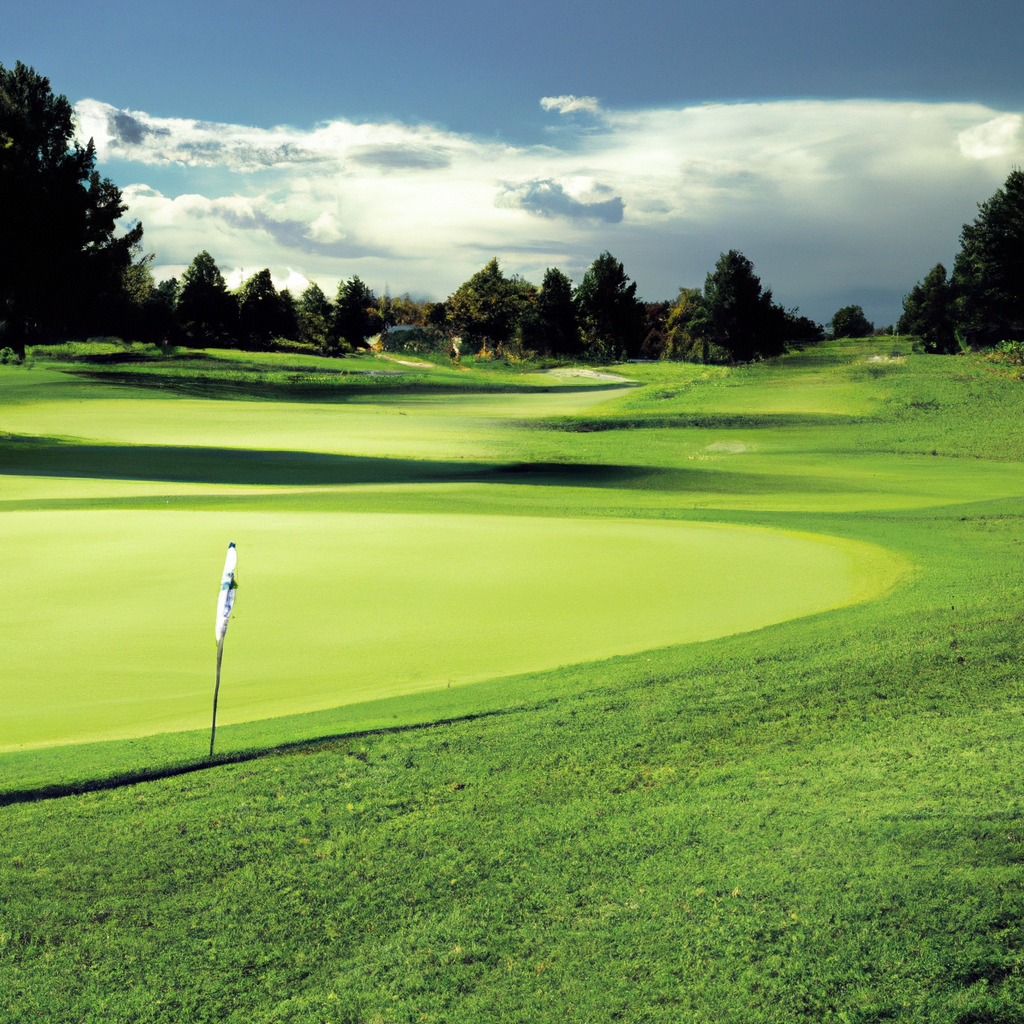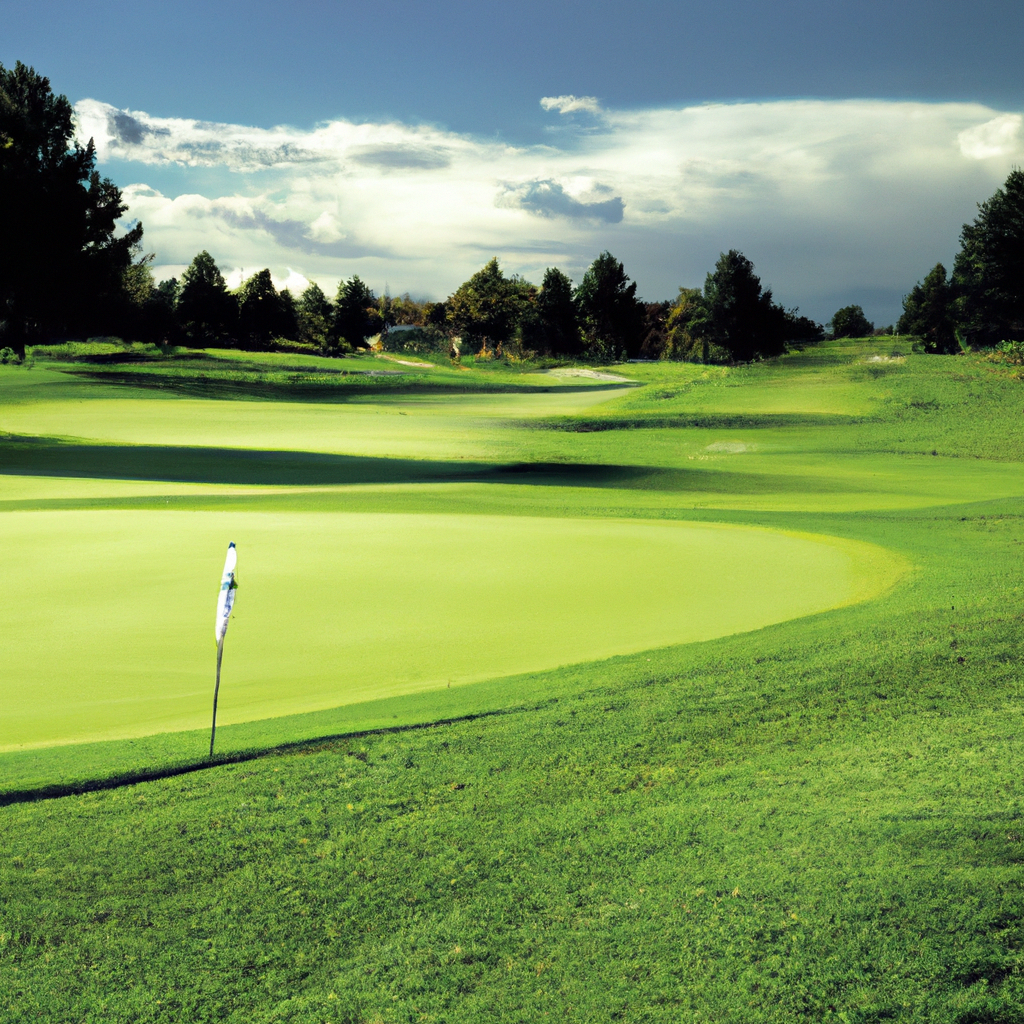We may earn money or products from the companies that may be mentioned in this post.
Imagine you’re strolling on the lush green fairways of a golf course, trying to make the most of your leisurely day. But wait, have you ever wondered how far you actually have to walk on a typical golf course? In this handy guide, we’ll reveal the secrets to determining the distance you’ll cover during your golfing adventure. From understanding the layout to calculating the yards, we’ll equip you with all the knowledge you need to estimate those miles and truly enjoy your golfing experience. So, grab your clubs and get ready to ace the art of measuring golf course distances!
Determining the Distance to Walk a Golf Course
Golf is a game that requires precision and careful planning. One important aspect of the game that often gets overlooked is determining the distance you need to walk on a golf course. Knowing the distance can have a significant impact on your game strategy, club selection, physical preparation, and time management. In this comprehensive guide, we will delve into the importance of knowing the distance, the various measurements used on golf courses, the factors that affect the total distance, and the tools available for measuring golf course distances.

Importance of Knowing the Distance
Enhanced Game Strategy
Knowing the distance to walk on a golf course can greatly enhance your game strategy. By being aware of the exact yardage or meterage, you can plan your shots more effectively. This knowledge allows you to select the appropriate club for each shot, taking into consideration the distance to the hole and the obstacles on the course. Understanding the distance can also help you determine how aggressively or conservatively you should play each hole.
Proper Club Selection
Choosing the correct club is crucial in golf, and knowing the distance to walk can greatly aid in club selection. By knowing the exact yardage or meterage to the hole, you can make informed decisions about which club to use. This knowledge helps you select a club that can achieve the desired distance while taking into account factors such as wind speed and direction. Proper club selection based on distance can significantly improve your chances of hitting accurate and consistent shots.
Physical Preparation
Walking a golf course can be physically demanding, especially on longer courses. Knowing the distance beforehand allows you to prepare both mentally and physically for the round. By knowing how many miles you will be walking, you can condition your body accordingly. Engaging in regular exercise, such as cardiovascular workouts and strength training, can help you build the endurance and stamina required to complete the course comfortably. Proper physical preparation ensures that you can maintain your focus and performance throughout the entire round.
Efficient Time Management
Time management is essential in golf, and knowing the distance can help you manage your time more efficiently. By knowing the total distance of the course and the pace of play, you can estimate how long it will take to complete the round. This knowledge allows you to plan accordingly, ensuring that you can finish the game within the desired timeframe. It also helps you avoid unnecessary delays or rushed shots, leading to a more enjoyable and relaxed golfing experience.
Understanding Golf Course Measurements
Yardage vs. Meterage
In golf, measurements are typically given in either yards or meters. Yardage is the most commonly used measurement in many countries, including the United States. However, several countries, such as those in Europe, use the metric system and provide measurements in meters. It is important to be familiar with both yardage and meterage, as you may encounter courses that use either unit of measurement.
Course Layout and Hole Variations
Golf courses are designed with various hole variations, and understanding the layout is essential for determining the distance you need to walk. Each hole typically has a designated tee box from which you start, and the distance from the tee box to the hole is referred to as the hole’s yardage or meterage. The course layout also includes fairways, hazards, greens, and pin positions, all of which affect the total distance you will walk during a round of golf.
Total Course Distance
To determine the total distance you need to walk on a golf course, you must add up the yardages or meterages of all the individual holes. This calculation gives you an accurate measure of the course’s length. The total course distance varies from course to course, with some shorter courses measuring around 5,000 yards or meters and championship courses measuring over 7,000 yards or meters. Understanding the total distance allows you to make informed decisions about scheduling, physical preparation, and game strategy.
Yardage vs. Meterage
Conversion Factors
If you are accustomed to one unit of measurement but come across a course that uses the other unit, it is important to be able to convert between yardage and meterage. The conversion factors are as follows:
- 1 yard is equal to approximately 0.9144 meters.
- 1 meter is equal to approximately 1.0936 yards.
Familiarizing yourself with these conversion factors allows you to quickly and accurately determine distances on courses that use a different unit of measurement than what you are accustomed to.
International Standards
While yardage is predominantly used in the United States, many countries worldwide use the metric system and provide measurements in meters. International golf competitions often adopt the use of meterage to ensure consistency among players from different countries. Understanding both yardage and meterage can be beneficial if you plan to play golf internationally or participate in tournaments governed by international standards.

Course Layout and Hole Variations
Par and Yardage
Each hole on a golf course is assigned a par value and a specific yardage or meterage. Par represents the number of strokes a skilled golfer should require to complete the hole. The yardage or meterage of a hole can vary greatly from hole to hole, with some holes requiring longer shots than others. Understanding these variations in par and yardage allows you to strategize your game accordingly, considering the distances you need to walk and the scoring expectations for each hole.
Tee Boxes
Tee boxes are the designated areas from which you start each hole. Courses typically have multiple tee boxes to accommodate players of different skill levels. Each tee box offers a different yardage or meterage, allowing players to choose the level of challenge they prefer. The further back the tee box is, the longer the distance you will need to walk for that particular hole. Knowing the yardage or meterage from each tee box helps you plan your shots and determine the most suitable starting point for your round.
Fairways and Hazards
Fairways are the well-maintained grassy areas that lead from the tee box to the green. These areas are relatively open and offer a direct path to the hole. Hazards, on the other hand, are areas on the course that pose challenges and require careful navigation. Hazards can include water bodies, bunkers, rough areas, and out-of-bounds zones. Understanding the layout of fairways and hazards helps you estimate the distances you need to walk between shots as you navigate the course.
Greens and Pin Positions
Greens are the areas where the holes are located, and they are typically covered with closely mown grass. Each green has multiple pin positions, which determine the specific location of the hole on that particular day. The distances between the greens and the pin positions can vary, as can the overall size and slope of the greens. Being aware of these factors helps you gauge the distances you need to walk to complete each hole and reach the respective greens.
Total Course Distance
Adding up Hole Distances
To determine the total distance you need to walk on a golf course, you must add up the yardages or meterages of all the individual holes. Consideration should be given to the specific routing of the course, as you may need to walk additional distances between holes or backtrack to return to the clubhouse. Adding up the hole distances allows you to estimate the total distance you will cover during your round, which can inform your physical preparation and time management.
Consideration of Routing
The routing of a golf course refers to the sequence of holes and the path you take to complete the entire course. Depending on the course’s design, you may need to walk longer distances between certain holes or make additional turns. Understanding the routing helps you estimate the distances you need to walk between holes accurately. Some courses provide maps or guidebooks that showcase the routing and help you plan your game strategy and walking distances more effectively.
Extra Distances (Practice Areas, Clubhouse, etc.)
When considering the total distance, it is important to account for any additional walking distances beyond the holes themselves. Golf courses often have practice areas, including driving ranges and putting greens, located away from the actual holes. Additionally, you may need to walk to the clubhouse or other facilities on the course. Accounting for these extra distances ensures that you have a comprehensive understanding of the total distance you will walk during your round.
Factors Affecting Total Distance
Course Elevation Changes
Many golf courses feature elevation changes throughout the layout, with uphill and downhill shots. These changes in elevation can significantly impact the total distance you need to walk. Walking uphill requires more effort and takes longer than walking on flat surfaces, while walking downhill can be quicker. Being aware of the elevation changes allows you to adjust your physical preparation and game strategy accordingly, ensuring that you can navigate the course efficiently.
Fairway Width
The width of fairways can vary from hole to hole, and this affects the distance you need to walk. Narrow fairways may require more accurate shots, as missing the fairway can result in longer paths to reach the hole. Conversely, wide fairways provide more forgiving landing areas and potentially less walking distance. Understanding the fairway widths allows you to select your targets and plan your shots, considering the distances you need to walk to reach optimal positions on the course.
Weather Conditions
Weather conditions, such as wind and rain, can impact how far your shots travel and ultimately affect the distance you need to walk. A strong headwind may require you to use more club power, resulting in longer shots and potentially more walking distance. Similarly, playing in wet conditions can affect the roll of the ball, altering distances on fairways and greens. Being mindful of the weather conditions helps you adjust your game strategy and walking distances accordingly.
Walking vs. Riding a Cart
Another factor to consider is whether you will be walking the course or using a golf cart. Opting to ride a cart can significantly reduce the walking distance, as you are transported between shots. However, choosing to walk the course provides various health benefits and allows for a more leisurely and immersive golfing experience. Deciding whether to walk or ride a cart depends on your physical capabilities, preferences, and the specific rules or policies of the golf course you are playing.
Tools for Measuring Golf Course Distances
Course Yardage Markers
Golf courses often have yardage markers strategically placed throughout the layout to assist players in determining distances. These markers can be found in various forms, such as colored stakes, plates on the ground, or signs. They typically indicate the yardage remaining to the hole from that specific point. Utilizing these course yardage markers helps you estimate the distances you need to walk and plan your shots accordingly.
GPS Devices and Smartphone Apps
Advancements in technology have introduced GPS devices and smartphone apps that can provide accurate distance measurements on a golf course. Golf-specific GPS devices and smartphone apps use satellite technology to pinpoint your location and display the yardage or meterage to various points on the course. These tools are convenient and can assist you in determining the distances you need to walk or hit your shots. However, it is important to note that some golf courses may have restrictions or specific policies regarding the use of electronic devices during play.
Rangefinders
Rangefinders are handheld devices that use laser technology to calculate precise distances on a golf course. They allow you to aim at a specific target, such as a flagstick, and obtain an accurate measurement. Rangefinders are particularly useful for determining distances to hazards, fairway bunkers, or specific areas on the course. These devices provide you with valuable information to plan your shots and walking distances effectively.
Pace and Stepping Techniques
Aside from using specific tools, there are simple and practical techniques you can employ to estimate distances while walking a golf course. One such technique is using your strides for estimation. By establishing the average distance covered in a single stride, you can count your strides as you walk to estimate distances accurately. Another technique is counting steps for approximation. By keeping track of the number of steps taken from one point to another, you can roughly calculate the distance you have walked. These techniques are beneficial when precise measurements are not available or if you prefer a more traditional approach to determining distances.
Course Yardage Markers
Types and Locations
Course yardage markers come in various forms and can be found at different locations on a golf course. Tee box markers are typically placed to indicate the yardage or meterage from each tee box. Fairway markers can be found along the edges of fairways, usually at regular intervals. These markers assist in determining the remaining distance to the hole as you progress down the fairway. Greenside markers are placed near the greens and indicate distances to the hole for approach shots and putting. Familiarizing yourself with the types and locations of these markers on a course helps you easily identify and utilize them to calculate distances.
Accuracy and Consistency
It’s important to note that course yardage markers may vary in accuracy and consistency due to factors such as wear and tear or different methods of measurement. While they can provide a general idea of distances, they may not always be completely precise. Relying solely on course yardage markers may lead to slightly inaccurate estimations. In such cases, utilizing additional tools or techniques, such as GPS devices or pacing techniques, can help improve accuracy and consistency.
Pace and Stepping Techniques
Using Strides for Estimation
Using your strides for estimation is a practical technique that can help you gauge distances accurately while walking a golf course. You can establish a consistent stride length by pacing off a known distance and counting the number of strides it takes you to cover that distance. Once you have determined your average stride length, you can use it to estimate distances during your round. Counting your strides as you walk between points on the course allows you to calculate the distances you have covered with a reasonable level of accuracy.
Counting Steps for Approximation
Counting steps is another technique that provides a rough approximation of distances on a golf course. Similar to using strides, you can establish your average step length by pacing off a known distance and counting your steps. While steps may vary in length due to personal factors, such as height and stride pattern, averaging your steps provides a consistent reference point. Counting the number of steps between various points allows you to estimate the overall distance covered while walking the course.
In conclusion, determining the distance to walk on a golf course is an essential aspect of the game that can greatly impact your overall performance and enjoyment. By understanding the importance of knowing the distance, familiarizing yourself with golf course measurements, considering the factors that affect total distance, and utilizing the available tools, you can enhance your game strategy, make informed club selections, prepare physically, and manage your time efficiently. Whether you rely on course yardage markers, GPS devices, or simple techniques such as pacing, having a comprehensive understanding of the distances you need to walk sets the foundation for a successful and enjoyable round of golf.
